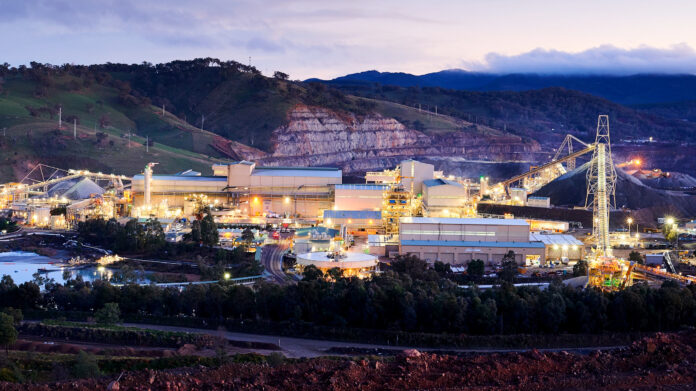In sum – what you need to know
One radio, full control – mining outfit Newmont has connected 12 dozers at a 2.5 km construction site with a single private 5G radio from Ericsson – delivering 175Mbps on uplink, without missing a beat.
Wi-Fi out, 5G in – so impressed with the total reliability of its new private 5G network, the firm is scrapping Wi-Fi for autonomous operations, based on the fact “unstable” Wi-Fi conked-out for half of every shift.
Smart mining goes global – with more earth moved per shift, Newmont plans to deploy private 5G to 14 mines on four continents, likely with Ericsson, to also connect drills, trucks, and graders above and below ground.
Some (limited) more information about US mining company Newmont Corporation’s work with private 5G at a big gold and copper mine in New South Wales, in Australia: a press note from Ericsson, which announced a supply deal with the firm in August last year, says a single 5G radio now supports a full remote-controlled bulldozer (‘dozer’) fleet across a 2.5 kilometre stretch at its above-ground tailings works at its Cadia mine. Newmont has been so impressed, it seems, that it is ready to deploy private 5G at operations in Australia, Africa, Latin America, and North America.
Newmont, the only gold producer in the S&P 500 Index, had already said as much after tests with Ericsson at the Cadia mine last year prompted it to declare that it will junk its Wi-Fi completely on its remote-controlled and autonomous machinery at all its mining sites. But it has deployed private 5G in earnest since then, and the results have been good (says its 5G supplier): that single 5G radio, the story goes, is delivering enough uplink throughput (175Mbps) to connect up to 12 dozers – and doing it with zero interruptions or outages. The deployment was referenced last week, as well, as a flagship contract its its quarterly financial review.
Cadia is Australia’s largest underground mine, apparently, and billed as a ‘tier-one asset”; as yet, the 5G deployment only covers its surface operations, specifically for its dozer fleet at a construction area for handling waste materials (‘tailings’) left over from mining. With Wi-Fi, Newmont was able to connect only two machines at distances of only 100 metres – “before the network and machines became unusable”, writes Ericsson. “Wi-Fi was unstable and unpredictable and could lead to downtime for half a 12-hour shift – or more for troubleshooting and efforts to restabilise connectivity.”
Newmont, which owns 14 mines on four continents, also producing zinc, lead, and silver, said workers are already pushing “more earth per shift” than previously. It plans to connect drill rigs, motor graders, and haul trucks besides, via both underground and overground private 5G setups. Ericsson worked with Telstra Purple, the system integration division of Australian operator Telstra, to supply telecoms equipment and spectrum for the original Cadia trial, which started way back in February 2023 – pre-dating its Newmont’s $16.8 billion purchase of rival Newcrest in late 2023.
Newmont has a local licence from the Australian Communications and Media Authority to run 5G in its own spectrum at all its sites in Australia. It also owns gold mines in Boddington in Western Australia and in the Tanami Desert in the Northern Territory. The existing setup uses massive MIMO (including in a ‘more-massive’ 64/64 transmit/receive antenna configuration), plus beamforming and beam-steering – providing a “leap forward in available throughputs at the extended distances found in surface operations”.
Ericsson has also used an ‘uplink booster’ in its radio microprocessors to boost the uplink signal ten-fold – “further improving uplink/upload performance” in mid-band spectrum. Newmont’s other mines are in Argentina, Canada, the Dominican Republic, Ghana, Mexico, Papua New Guinea, Peru, Suriname, and the US.
Chris Twaddle, director of process control, networks and operational cellular at Newmont, said: “Private 5G gives us a scalable and high-performing solution that provides the coverage needed and keeps our people safe. It’s also enabling our long-term digital transformation vision to use 5G for smart mining at our tier-one surface and underground mines globally.”
Manish Tiwari, head of enterprise 5G in Ericsson’s enterprise wireless solutions division, said: “The deployment with Newmont at Cadia demonstrates the power of 5G for industry, where Ericsson’s… radio portfolio can reduce the amount of infrastructure that needs to be deployed and operated to cover an industrial site or area. This also allows enterprises to use private 5G networks they own to achieve high levels of performance for advanced video-based control and computer vision initiatives without large amounts of spectrum. This is especially valuable to organisations that are operating in spectrum-constrained markets.”

